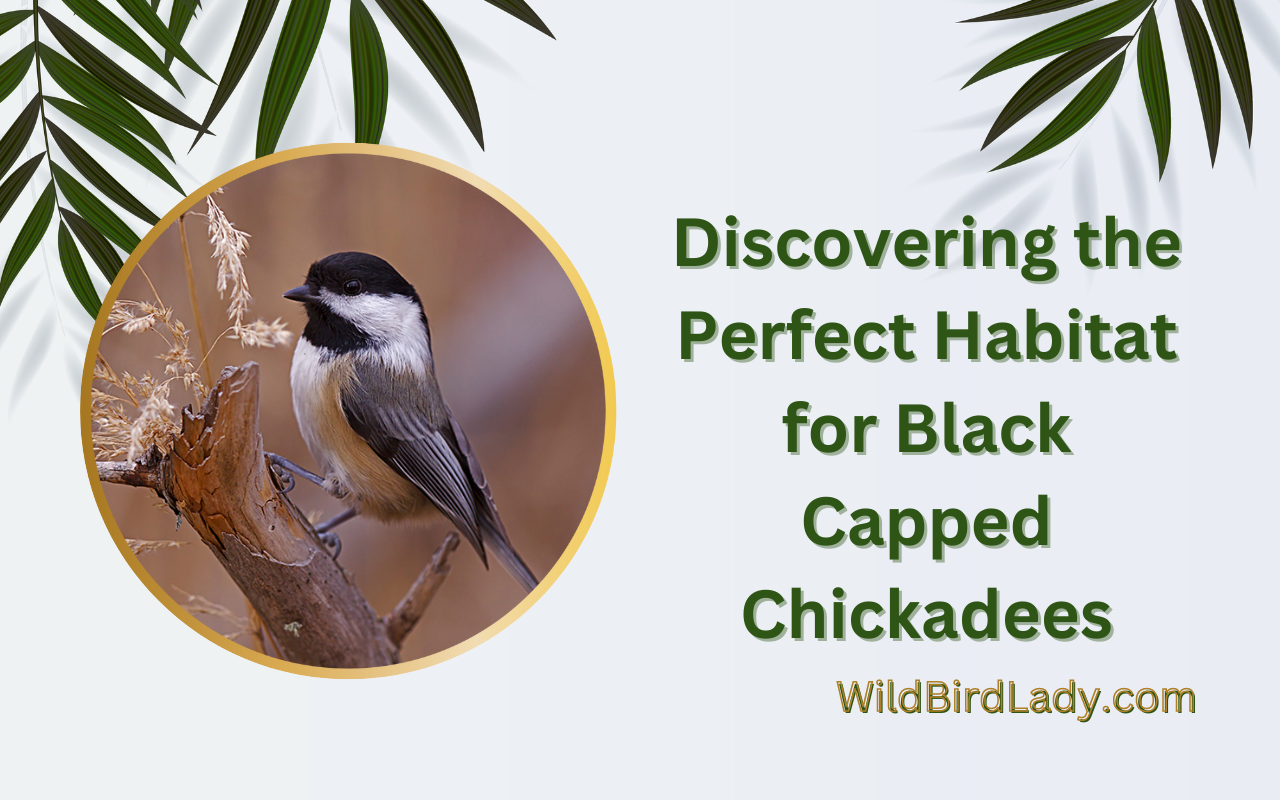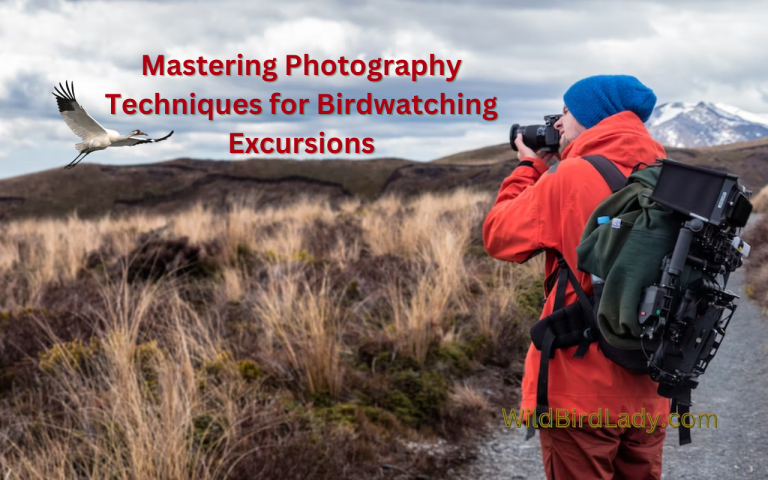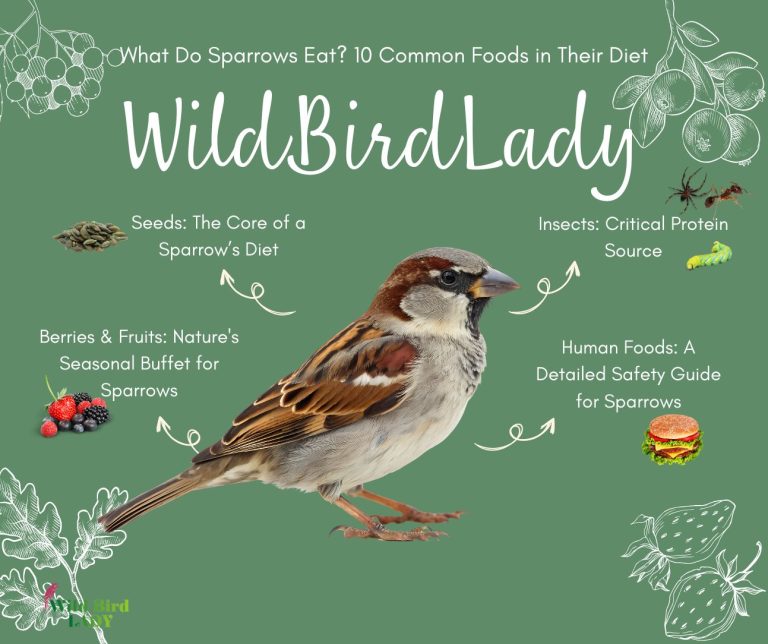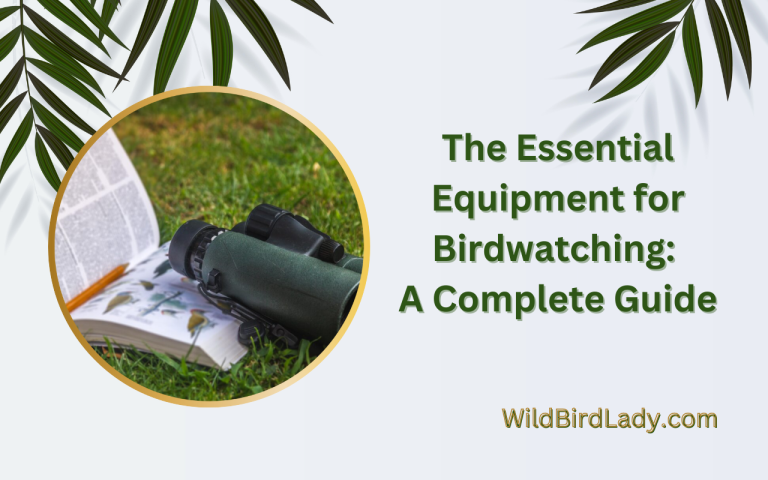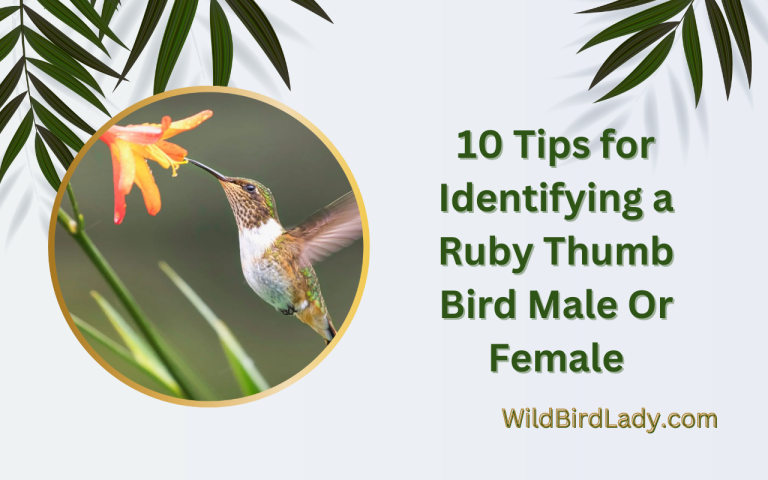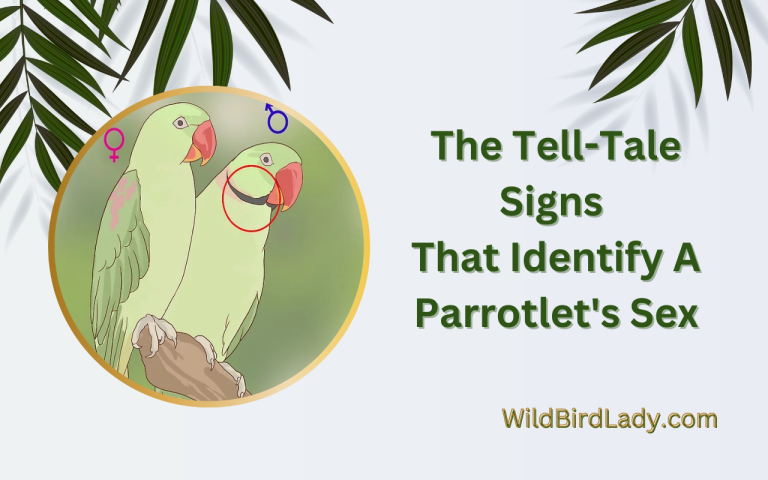Discovering the Perfect Habitat for Black Capped Chickadees
Black capped chickadees prefer habitats with mixed deciduous and coniferous trees and a consistent source of food. To find the perfect habitat for these small birds, it is essential to create a suitable environment that provides shelter, food, and nesting sites.
Whether you want to attract them to your backyard or create a habitat in a forest, understanding their preferences and needs is crucial. This article will explore the ideal habitat for black capped chickadees and provide tips on how to create a welcoming environment for these charming birds.
Understanding The Black Capped Chickadees
Discovering The Perfect Habitat For Black Capped Chickadees
Black capped chickadees are widespread, fascinating birds that are commonly found in the northern half of america. They are popular due to their charming personalities, cute size, and the delightful sounds they make. If you’re here to learn about black capped chickadees and create an ideal habitat for them, then you’ve come to the right place.
In this guide, we’ll discuss the key qualities, behavior, and diet of black capped chickadees, so you can design an environment that they’ll love.
Brief Introduction To Black Capped Chickadees
Black capped chickadees can brighten up any yard with their playful, curious personalities, and adorable size. They are small, active birds that belong to the tit family. These birds are known for their distinctive vocalizations, which consist of a two-tone whistle, and they can often be heard before they are seen.
Black capped chickadees are easily recognizable, with their signature black cap and bib, white cheeks, and grey wings.
Key Characteristics Of Black Capped Chickadees
Black capped chickadees are fascinating birds that have some unique traits that set them apart from others.
- They are tiny birds, weighing only about 0.4-0.5 oz with a length of 4-5 inches.
- They have a large head in proportion to their body and eyes that are set far apart.
- Black capped chickadees have sharp claws that allow them to cling to bark, branches, and twigs easily.
- These birds have a strong bill, which they use to peck at seeds and dig around in branches.
Diet Habits Of Black Capped Chickadees
Black capped chickadees have a varied diet, which is why they are so adaptable to different habitats. They are primarily seed-eaters, but they also feed on a variety of insects. Here are some key points to keep in mind when it comes to feeding black capped chickadees:
- These birds love to eat sunflower seeds, peanuts, and suet.
- Black capped chickadees cache food, meaning they store seeds in trees to eat later.
- They are attracted to seeds that are small, thin-shelled, and easy to open.
- During the winter months, these birds need high-fat foods to survive the cold weather.
Understanding the behavior, food, and characteristics of black capped chickadees is crucial to creating an optimal habitat for them. Along with food, they also need access to water and natural vegetation to thrive. By setting up bird feeders and providing fresh water, you can create a welcoming environment for black capped chickadees in your yard.
Start by incorporating these tips into your yard and watch as these fascinating little birds flock to your outdoor space!
Habitat Requirements For Black Capped Chickadees
Discovering The Perfect Habitat For Black Capped Chickadees
Black-capped chickadees (poecile atricapillus) can be seen year-round in the united states and canada. These small birds, characterized by their characteristic black cap and bib, are fascinating creatures that require specific habitat requirements for their survival. In this blog post, we will explore the factors that influence the choice of habitat for black-capped chickadees and the key features of the ideal habitat that they need to thrive.
Understanding The Habitat Requirements For Black Capped Chickadees
Black-capped chickadees are non-migratory birds inhabiting coniferous and deciduous forests and urban parks. These birds have specific habitat requirements:
- They need dead trees or snags for nesting sites and roosting at night.
- They require a variety of food sources, including insects, spiders, and seeds.
- They need a continuous supply of water for drinking and bathing.
- They require suitable vegetation cover for protection from predators.
- They require cavities in trees for nesting.
Factors Influencing The Choice Of Habitat For Black Capped Chickadees
Several factors influence the choice of habitat for black-capped chickadees. Here are a few factors that affect their nesting and survival:
- Habitat fragmentation: Loss of habitat due to fragmentation negatively affects the chickadees’ ability to nest, forage, and survive.
- Wood density: Black-capped chickadees prefer areas with high wood density for roosting.
- Food availability: Availability of insects, seeds, and fruits is crucial to the chickadees’ survival, and areas with high food availability are preferred.
- Vegetation cover: Dense vegetation cover provides protection from predators, which is necessary for survival.
Key Features Of The Perfect Habitat For Black Capped Chickadees
The ideal habitat for black-capped chickadees should have the following features:
- Plenty of dead trees or snags for nesting and foraging sites.
- A mixture of deciduous and coniferous trees for roosting.
- A continuous supply of water, such as streams, lakes, or bird baths.
- Dense vegetation cover, including shrubs and brush piles, for protection from predators.
- Nesting boxes or cavities in trees for nesting.
Black-capped chickadees have specific habitat requirements that influence their choice of habitat. Habitat fragmentation, food availability, vegetation cover, and wood density are important factors that affect their nesting and survival. The ideal habitat should have plenty of dead trees or snags, a mixture of deciduous and coniferous trees, a continuous supply of water, dense vegetation cover, and nesting boxes or cavities in trees.
By creating the perfect habitat for black-capped chickadees, we can ensure that these fascinating birds will continue to thrive for many years to come.
Identifying Suitable Environments For Black Capped Chickadees
Discovering The Perfect Habitat For Black Capped Chickadees
Black-capped chickadees are small, lively birds that are native to north america. These birds have a distinctive black cap and bib, with white cheeks. To attract and provide a suitable habitat for these birds, it’s crucial to identify the appropriate environments that black-capped chickadees thrive in.
Here are some of the key environments that black-capped chickadees tend to prefer.
Forested Habitats For Black Capped Chickadees
Black-capped chickadees tend to inhabit forested regions, and they prefer areas with deciduous and coniferous trees. These environments offer the birds enough food, such as insects and seeds, while also providing them with suitable nesting sites.
Here are some of the key elements of a forested habitat suitable for black-capped chickadees:
- Environment with deciduous and coniferous trees
- A diverse range of tree species with different ages for nesting sites
- Shrubs and brush for nesting and roosting cover
- Dead trees or snags to serve as a food source and a place to excavate nesting cavities
Parklands And Backyards For Black Capped Chickadees
Apart from forested regions, black-capped chickadees are also known to inhabit open areas such as parks and our own backyards. To attract these birds to your backyard, consider providing food resources and specific shrubs suitable for nesting.
Here are some of the key elements of parklands and backyard environments suitable for black-capped chickadees:
- Providing food resources such as suet, sunflower seeds, and birdseed
- Nesting boxes or roosting pockets mounted on trees or posts
- Shrubs, such as dogwood, serviceberry, and elderberry, suitable for nesting and roosting cover
Riparian Areas For Black Capped Chickadees
Riparian areas, such as rivers and streams, provide black-capped chickadees with moist environments that support food resources and nesting sites. These habitats have a rich variety of plant and insect life that the birds require.
Here are some of the key elements of riparian areas suitable for black-capped chickadees:
- Rivers and streams with suitable water depths for insect life
- Deciduous and coniferous trees for nesting and roosting cover
- Shrubs and brush for nesting and roosting cover
- Nesting boxes or roosting pockets mounted on trees or posts
Identifying suitable environments for black-capped chickadees is crucial to attract and provide a suitable habitat for these birds. Whether it’s a forested habitat, parklands, or riparian areas, each has specific elements that provide the birds with food and nesting sites.
By creating these environments, you can attract these lively little birds and create a suitable home for them in your backyard.
Creating The Perfect Habitat For Black Capped Chickadees
Black capped chickadees are charming and friendly little birds that can be attracted to your garden with a few simple steps. With a bit of attention to their nesting, food, and shelter needs, you can create the perfect habitat for these delightful winged creatures.
Here are some tips on how you can make your backyard a safe haven for black capped chickadees.
Planting The Right Trees And Shrubbery For Black Capped Chickadees
- Black capped chickadees love dense foliage for nesting and hiding from predators.
- Providing native plants, trees, shrubs, and flowers can make them feel more at home, and they will visit your garden frequently.
- Some of their preferred trees and shrubbery include maples, elms, willows, oaks, dogwoods, and hemlocks.
- Mature trees with natural cavities provide natural nesting locations.
- If your area has limited natural vegetation, providing birdhouses can be an alternative.
Providing The Ideal Nesting Sites For Black Capped Chickadees
- Consistent food and nesting sites are critical to black capped chickadee survival, so providing multiple nesting boxes is helpful.
- Nests should be placed near quiet areas to avoid interference or disruptions.
- Use designated nesting boxes with different entry-hole sizes can accommodate variable species.
- A mounting pole can be attached to boxes to position them higher, preventing predators such as cats, squirrels, and raccoons from reaching them.
- Provide nesting materials such as hair or fur, cotton, feathers, and moss to help build their homes.
Supplementing With A Suitable Food Supply For Black Capped Chickadees
- The primary food of black capped chickadees consists of small insects, seeds, and berries.
- Supplementing their natural diet with a bird feeder can be beneficial.
- Providing a varied mix of black oiled sunflower seeds, mealworms, and suet can ensure a year-round food supply.
- Ensure that your bird feeder is in a location where food is easily accessible to birds and clear of predators.
Creating the perfect habitat for black capped chickadees is a lovely way to enjoy the company of these gorgeous birds in your garden. By providing natural vegetation, nesting areas, and varied food supply, you are doing your part to help these birds thrive in our environment.
Frequently Asked Questions Of Discovering The Perfect Habitat For Black Capped Chickadees
What Kind Of Habitat Do Black Capped Chickadees Prefer?
Black capped chickadees prefer habitats that offer plenty of insects, shrubs, and trees for cover and nest-building. They also prefer habitats with a mix of mature and young trees, as well as dead branches and leaf litter on the ground.
What Is The Size Of The Black Capped Chickadee’S Habitat Range?
Black capped chickadees have an average home range of about 7. 5 acres, but it can vary depending on the location and habitat quality. They tend to be non-migratory, so finding a suitable habitat is critical for their survival.
How Can You Attract Black Capped Chickadees To Your Yard?
You can attract black capped chickadees to your yard by providing food, water, and nesting boxes. They prefer a mix of sunflower seeds, peanuts, and suet. Their birdhouses should be about 6-8 inches deep with a 1. 25-inch opening, placed about 6-15 feet off the ground in a shaded area.
What Are The Benefits Of Having Black Capped Chickadees On Your Property?
Black capped chickadees are beneficial to your property as they consume large numbers of insects and pests that could damage your trees and gardens. They also help to pollinate plants and disperse seeds, adding to the overall health and biodiversity of your landscape.
How Can You Tell If Black Capped Chickadees Are In Your Area?
You can identify black capped chickadees by their distinct black cap, white cheeks, and gray back. Listen for their clear, whistled “fee-bee” call, and observe their acrobatic movements as they search for food in trees and bushes. Keep an eye out for their distinctive nests in the spring.
Conclusion
Black capped chickadees are incredibly fascinating birds that can bring life into our gardens. Their sociable nature and beautiful plumage make them a joy to watch. With this guide, we have covered all the essential aspects involved in creating the perfect habitat for these birds.
Starting from understanding their biology, behavior, and habitat, to creating bird-friendly environments in your backyard and understanding the best type of food to feed them. The most crucial aspect is to ensure that your garden is safe and secure for these birds, so they feel free to visit and spend time there.
Remember, creating a habitat for these birds is not only beneficial for chickadees, but also for other bird species, insects, and plants. By understanding their needs and incorporating their requirements, you can contribute to the environment positively. So, let’s work together to create a fantastic world for these little creatures!
Published on June 3, 2023 | Last Updated on June 27, 2025 by Rifat Ahmed

